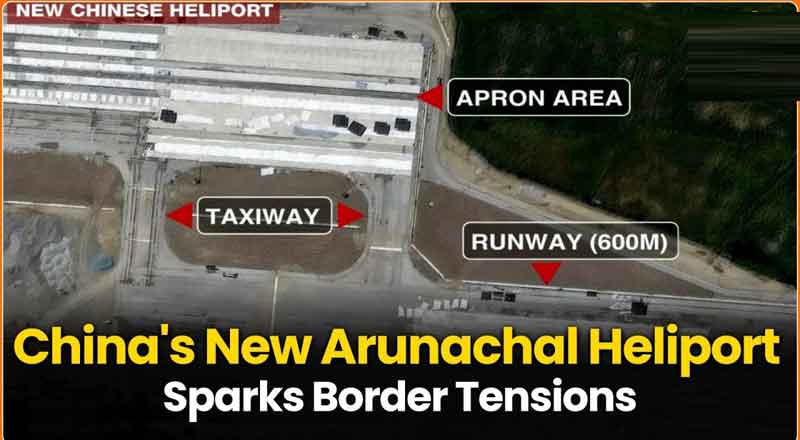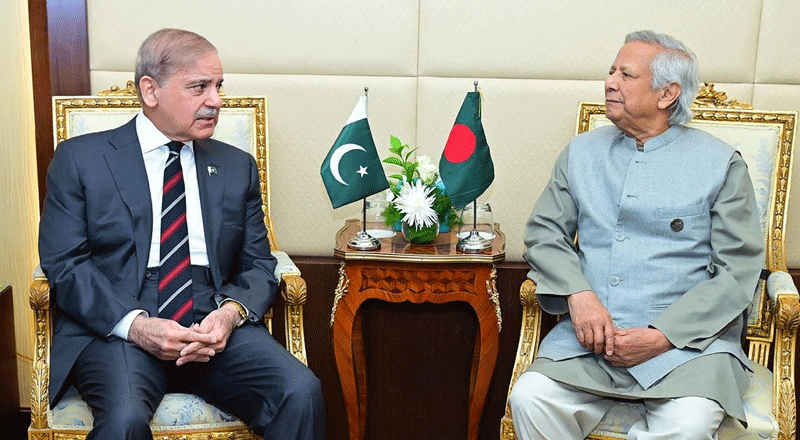Recent developments along the c-China border have raised concerns over Beijing’s military activities near the Line of Actual Control (LAC). New satellite imagery suggests that China is constructing a massive heliport just 20 kilometers from the LAC in Arunachal Pradesh, signaling a potential increase in its military capabilities. This comes despite recent progress in border talks, where India’s External Affairs Minister S. Jaishankar stated that 75% of disengagement issues with China have been resolved. However, this construction could escalate tensions between the two countries, especially in the already sensitive region of Arunachal Pradesh.
The New Heliport: Location and Features
The heliport, located in China’s Nyingchi Prefecture in the Tibet Autonomous Region, lies close to the “Fishtails” sector near Arunachal Pradesh. According to geospatial analyst Damien Symon, who shared satellite images of the construction, the facility has rapidly progressed since December 2023. By September 2024, the site was already in an advanced stage of construction.
The heliport will feature a 600-meter runway, facilitating the movement of helicopters with ease. It also includes multiple hangars, enhancing the capability of China’s People’s Liberation Army (PLA) to house aircraft. Military sources have indicated that once operational, the heliport could serve both military and civilian purposes, further enhancing China’s strategic presence in the region.
Why the Heliport Matters
This new heliport holds significant implications for India, especially in terms of China’s increasing air and surveillance capabilities along the LAC. The heliport would enable the PLA to carry out more efficient intelligence gathering, surveillance, and reconnaissance operations. It also provides China with the ability to swiftly mobilize troops and respond to any border escalations, similar to the Galwan Valley clash of June 2020.
Retired Lt. General Pravin Bakshi, former head of the Indian Army’s Eastern Command, emphasized the potential threat posed by this heliport. He warned that it could challenge India’s security in sensitive areas near the LAC. “This heliport will be a threat to key areas which are considered sensitive here,” Bakshi said, adding that India should consider a suitable response in coordination with the Indian Air Force to prevent any attempts by China to exploit “grey-zone” warfare tactics.
China’s Broader Military Infrastructure Expansion
China’s construction of the heliport is part of a broader trend of expanding military infrastructure along the LAC. Since the Galwan clash in 2020, Beijing has significantly ramped up its military presence in the region. From building villages, known as ‘Xiaokang’ villages, to constructing roads, bridges, and bunkers, China has steadily fortified its position along the disputed border.
In July 2024, China completed a 400-meter bridge connecting the north and south banks of Pangong Lake in Ladakh, further extending its reach into the region. The PLA has also been constructing tunnels, helipads, and military camps in various other stretches along the LAC.
A UK-based think tank previously reported that China had expanded infrastructure in Aksai Chin, a region claimed by both India and China. The report highlighted the construction of modern, weatherproof camps, roads, and helipads, all aimed at improving China’s ability to deploy troops swiftly in case of future conflicts.
India’s Response and Preparedness
While India has not yet issued an official response to the heliport construction, the country has been taking steps to strengthen its own presence along the border. India has launched the ‘Vibrant Villages’ initiative, aimed at developing 3,000 villages in the Northeastern states, including Arunachal Pradesh, to counter China’s ‘Xiaokang’ villages. The initiative is backed by an initial budget of ₹4,800 crore, and seeks to improve infrastructure, boost local economies, and enhance the standard of living for border residents.
In addition to the village project, India is building a 2,400-kilometer trans-Arunachal highway, which will enhance connectivity to frontline military posts and reduce travel time in case of emergencies. Reports in August 2024 also suggested that India had approved the construction of five additional roads in eastern Ladakh to improve troop mobility and logistics along the LAC.
India is also enhancing its military preparedness by constructing high-tech bunkers along the border. These bunkers are designed to house at least 120 troops each and can withstand harsh, sub-zero temperatures, ensuring that Indian soldiers remain battle-ready in extreme conditions.
Strategic Implications for India-China Relations
China’s construction of the heliport near Arunachal Pradesh, combined with its broader military buildup along the LAC, raises important questions about Beijing’s intentions in the region. While India has made progress in border talks, China’s actions suggest that it remains committed to asserting its territorial claims, potentially through military means.
For India, the challenge lies in responding to these provocations without escalating the situation. Strengthening border infrastructure, enhancing military readiness, and maintaining diplomatic channels will be crucial in managing this ongoing dispute. As both nations continue to vie for influence in the region, Arunachal Pradesh and other sensitive border areas will remain focal points of India-China tensions for the foreseeable future.
(With inputs from agencies)





